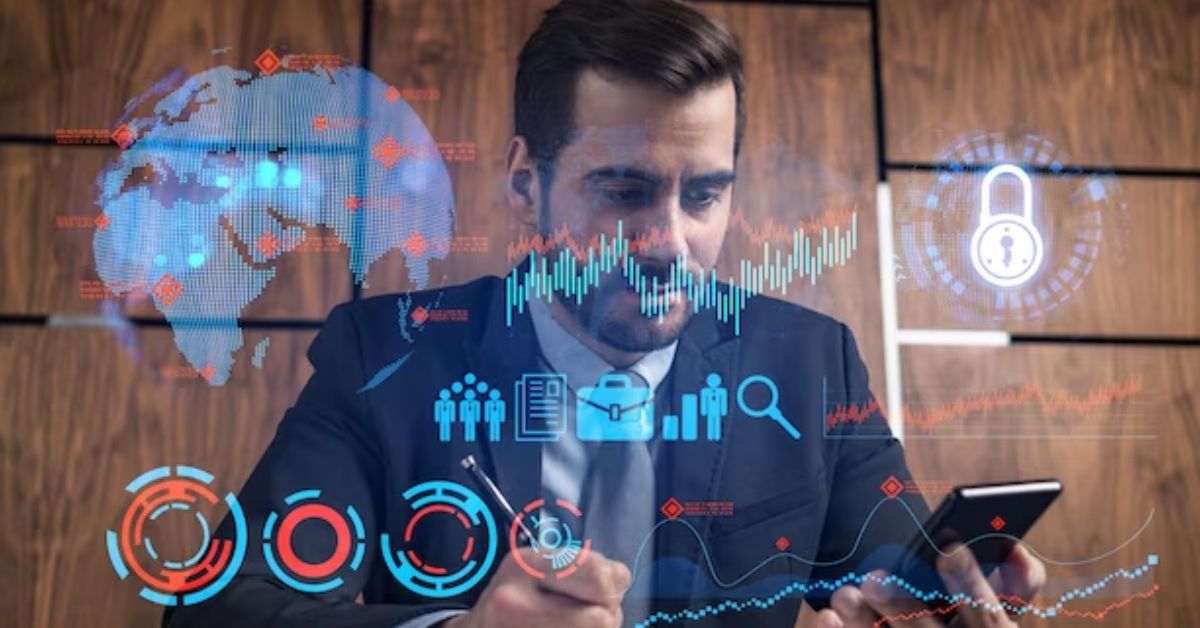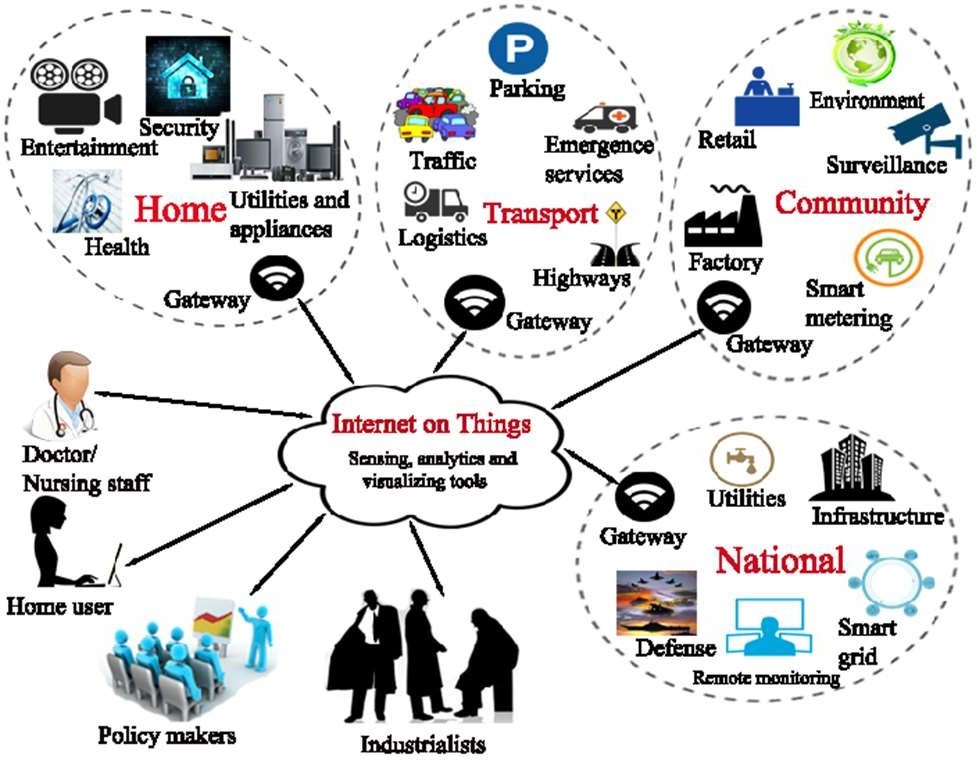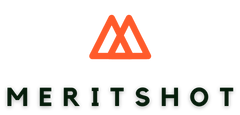The Internet of Things (IoT) has emerged as a transformative force, reshaping the way we interact with the world around us. It represents a network of interconnected devices, sensors, and objects that collect and exchange data, creating a seamless web of information. The significance of IoT in today’s world cannot be overstated, as it has found applications in virtually every industry, from healthcare and agriculture to transportation and smart cities.
At the heart of this IoT revolution lies the concept of data science, a multidisciplinary field that blends statistical analysis, machine learning, and domain expertise. Data science plays a pivotal role in unlocking the potential of IoT by harnessing the data generated by these interconnected devices. It acts as the bridge between the raw data collected from IoT sensors and the actionable insights that drive decision-making.
In this blog, we will delve deep into the synergy between IoT and data science, exploring how these two domains intersect and complement each other. We will uncover how data science empowers us to extract meaningful insights from the vast ocean of data generated by IoT, ultimately driving innovation, efficiency, and improved quality of life. So, let’s embark on a journey into the world of “Data Science in the Internet of Things (IoT)” and discover the incredible possibilities it presents.

The Intersection of IoT and Data Science
In the realm of technology, the synergy between the Internet of Things (IoT) and data science is akin to a powerful fusion that has the potential to reshape industries and revolutionize the way we live and work. To comprehend this convergence, we must first grasp how IoT generates vast amounts of data and why data science is the key to unlocking its full potential.
IoT: The Data Generator
IoT comprises a sprawling network of interconnected devices and sensors that collect and transmit data continuously. These devices, ranging from smart thermostats and wearable fitness trackers to industrial machinery and autonomous vehicles, generate an unprecedented volume and variety of data. This data encompasses everything from temperature readings and location information to user behavior patterns and machine diagnostics.
The significance of this data deluge lies in its potential to provide real-time insights, optimize processes, enhance decision-making, and improve overall efficiency across various domains. However, the sheer magnitude and complexity of IoT data present challenges that traditional data analysis methods cannot address effectively.
Data Science: The Catalyst for Insights
This is where data science steps in as a critical enabler of IoT’s transformative capabilities. Data science encompasses a range of techniques, including data preprocessing, statistical analysis, machine learning, and artificial intelligence, all aimed at deriving actionable insights from raw data.
Data scientists use these techniques to clean, structure, and analyze the massive datasets generated by IoT devices. They uncover hidden patterns, trends, and correlations that might remain invisible to conventional analysis methods. Through predictive modeling and advanced analytics, data science
enables organizations to anticipate equipment failures, optimize energy consumption, enhance customer experiences, and much more.
The Potential Impact
The potential impact of data science on IoT applications and industries is profound. Consider the following scenarios:
Smart Healthcare: In healthcare, IoT devices collect patient data continuously. Data science can analyze this information to predict disease outbreaks, personalize treatment plans, and improve patient monitoring.
Manufacturing: IoT sensors in factories monitor machine performance. Data science can identify maintenance needs, reducing downtime and optimizing production.
Agriculture: IoT sensors in fields provide real-time data on soil conditions and crop health. Data science can recommend irrigation schedules and detect disease outbreaks, improving crop yields.
Transportation: IoT-enabled vehicles generate data on traffic patterns and driver behavior. Data science can enhance route planning, reduce accidents, and pave the way for autonomous vehicles.
In essence, data science is the linchpin that transforms raw IoT data into actionable insights, driving innovation, efficiency, and competitiveness across industries. It is the catalyst that empowers organizations to harness the full potential of the Internet of Things, making our world smarter, safer, and more connected.
IoT Data Collection:
IoT data collection is the foundation of the Internet of Things ecosystem. Here’s a concise overview of how data is collected in IoT and the associated challenges:
A. Data Collection Mechanisms:
- IoT data collection relies on sensors, which are specialized devices that monitor physical parameters such as temperature, humidity, motion, or location.
- These sensors continuously gather data from their surroundings and convert it into digital format for
- IoT devices, which can range from smart home appliances to industrial machines, host these sensors and act as data collectors.
B. Data Transmission Methods:
- Data collected by IoT sensors and devices needs to be transmitted to a central processing point, often the cloud or an edge computing system.
- Various transmission methods are employed, including wired connections (e.g., Ethernet) and wireless technologies like Wi-Fi, cellular networks, or LPWAN.
C. Challenges in Managing IoT Data:
- IoT data poses unique challenges due to its sheer volume, variety, and
- Managing and analyzing diverse data sources, each with its own format and frequency of updates, can be daunting.
- Data integrity, security, and privacy are persistent concerns, especially given the sensitive nature of some IoT applications.
IoT data collection is the starting point for extracting valuable insights, but it also demands careful consideration of the challenges involved in managing and analyzing this wealth of data.
Data Preprocessing and Cleaning:
Data preprocessing and cleaning are critical steps in the IoT data analytics pipeline, ensuring that the data used for analysis is accurate, reliable, and suitable for deriving meaningful insights. Here’s an overview:
Importance of Data Preprocessing and Cleaning:
- In IoT data analytics, the quality of the insights you can derive is directly dependent on the quality of the data you start with.
- Data preprocessing involves tasks like cleaning, transforming, and organizing data to make it ready for analysis.
- Cleaning addresses errors, inconsistencies, and missing values, ensuring that the data is accurate and reliable.
- Preprocessed data sets the foundation for more advanced analytics techniques such as machine learning and predictive modeling.

Common Data Quality Issues in IoT Datasets:
Missing Data: Incomplete or missing data points are common in IoT datasets due to sensor failures, network issues, or device malfunctions.
Noisy Data: Noise in data can be caused by sensor inaccuracies or environmental factors, leading to erratic values that need to be smoothed or filtered.
Outliers: Outliers, which are extreme values that deviate significantly from the norm, can distort analysis and need to be identified and addressed.
Inconsistent Data: Data from different sensors or devices may have different units, scales, or formats, making it challenging to analyze them together.
Data Synchronization: Timestamps and data synchronization issues can occur when data from multiple devices are not properly aligned in time.
Duplicate Data: Duplicate entries or redundant data can skew results and inflate storage requirements.
Examples of Data Quality Issues:
- For example, in environmental monitoring, a temperature sensor might occasionally malfunction, leading to gaps or spikes in temperature data.
- In predictive maintenance for industrial machines, inconsistent data formats from different manufacturers can hinder analysis.
- In a smart city application, missing GPS data from a public transportation system could disrupt route optimization algorithms.
- Anomaly detection in healthcare IoT might be compromised if noisy sensor data is not cleaned
In conclusion, data preprocessing and cleaning are vital steps in ensuring the reliability and accuracy of IoT data analytics. These steps are essential for maximizing the value of IoT data in making informed decisions, optimizing processes, and driving innovation.
Data Analytics Techniques in IoT:
Data analytics techniques play a crucial role in extracting valuable insights from the vast amounts of data generated by IoT devices. Here, we’ll explore various data analytics methods commonly used in IoT applications:
1. Machine Learning (ML):
Supervised Learning: ML models are trained on labeled data to make predictions or classifications. In IoT, this can be used for predictive maintenance, anomaly detection, and forecasting.
Unsupervised Learning: This approach identifies patterns and relationships within data, often used for clustering devices or sensors with similar behavior.
Reinforcement Learning: Applied in IoT for optimizing control systems and decision-making in real- time, such as autonomous vehicles or smart grids.
Statistical Analysis:
Descriptive Statistics: Used to summarize and describe IoT data, helping to identify trends, central tendencies, and variations.
Hypothesis Testing: Helps in validating assumptions and drawing conclusions from IoT data, especially in A/B testing scenarios.
Time Series Analysis: Vital for understanding data with temporal dependencies, like sensor readings over time.
Data Visualization:
Interactive Dashboards: Create user-friendly dashboards for monitoring and controlling IoT devices in real-time.
Heatmaps, Scatter Plots, and Time Series Plots: Visual representations of data trends and correlations to aid in decision-making.
Geospatial Mapping: Useful for IoT applications that involve location data, such as asset tracking and smart cities.

Real-World Applications:
- Predictive Maintenance:
- In manufacturing, predictive maintenance models analyze sensor data to predict when equipment is likely to fail, minimizing downtime and reducing maintenance costs.
2. Smart Grids:
- Data analytics help utilities optimize the distribution of electricity by analyzing consumption patterns and predicting demand spikes.
3. Healthcare:
- Wearable IoT devices collect patient data, which can be analyzed to provide early warning signs of health issues or optimize treatment plans.
4. Agriculture:
- Data analytics can optimize irrigation systems by analyzing soil moisture and weather data to determine the optimal watering schedule, conserving resources.
5. Smart Cities:
- Traffic flow and congestion data are analyzed to optimize traffic signals, reduce congestion, and improve overall urban mobility.
6. Environmental Monitoring:
- IoT sensors gather data on air quality, water qualy, and weather conditions, aiding in pollution control and disaster management.
By harnessing these data analytics techniques, IoT applications can not only improve operational efficiency but also drive innovation, enabling smarter decision-making and more sustainable practices across various industries.
Challenges and Solutions in Implementing Data Science in IoT:
Bringing data science into the realm of IoT presents unique challenges and limitations. However, with careful consideration and innovative solutions, these challenges can be mitigated. Let’s delve into some of the primary issues and how to address them:
| Issues | Challenges | Solution |
| Data Privacy and Security Concerns | IoT devices often collect sensitive data, and security breaches can have severe consequences | Implement robust encryption methods for data in transit and at rest. Use secure authentication and access controls. Regularly update firmware and software to patch vulnerabilities. Conduct security audits and penetration
testing |
| Scalability and Data Volume | IoT generates massive amounts of data. Handling and processing such volumes can strain infrastructure | Employ scalable cloud or edge computing solutions. Use data compression and aggregation techniques to reduce data size. Implement distributed data
storage and processing |
| Data Quality and Reliability | IoT data can be noisy, incomplete, or inconsistent due to sensor errors or connectivity issues | Implement data preprocessing techniques, including data cleaning, imputation, and outlier detection. Use redundancy and sensor fusion
to improve data quality. |
| Interoperability and Standards | IoT devices from different manufacturers may use different protocols and data formats. | Promote industry standards for IoT communication and data formats. Implement middleware and gateways to bridge between different protocols. Use open-source platforms that support multiple
device types. |
| Energy efficiency | Many IoT devices are battery- powered, requiring careful energy management | Use low-power communication protocols like MQTT or CoAP. Implement energy-efficient
hardware and algorithms. |
| Latency and Real Time Processing | Some IoT applications require real-time data analysis and decision-making. | Employ edge computing for in- device or near-device data processing. Use streaming data analytics platforms for real-
time insights. |
| Regulatory Compliance | IoT deployments may be subject to various regulations related to data privacy, safety, and environmental concerns | Stay informed about relevant regulations and standards.
Design IoT solutions with compliance in mind. Seek legal counsel if needed |
| Data Ownerships and Ethics | Determining data ownership and ensuring ethical use of IoT data can be complex. | Clearly define data ownership in contracts and agreements. Implement ethical data handling practices, including data anonymization and informed consent for data
collection |
Navigating these challenges and implementing effective solutions is essential for harnessing the full potential of data science in IoT. By addressing these issues, organizations can unlock valuable insights, enhance operational efficiency, and drive innovation while ensuring the security and privacy of IoT data.
IoT Use Cases Revolutionized by Data Science:
Data science has significantly transformed various IoT applications, ushering in new possibilities and efficiencies across different industries. Here are some specific use cases where the synergy of data science and IoT has made a substantial impact:
1. Smart Cities:
- Use Case: Traffic Management
- How Data Science Helps: Data from traffic cameras, sensors, and GPS devices are analyzed to optimize traffic signal timings and predict congestion, reducing traffic jams and improving urban
- Example: The city of Barcelona uses IoT and data analytics to reduce traffic congestion by 21% and greenhouse gas emissions by 23%.
2. Healthcare:
-Use Case: Remote Patient Monitoring
- How Data Science Helps: Wearable IoT devices collect patient data like heart rate, temperature, and activity levels. Machine learning models analyze this data to provide early warning signs of health issues, improving patient care.
-Example: Philips’ HealthSuite platform utilizes IoT and data analytics to remotely monitor patients’ vital signs, reducing readmission rates by 20%.

3. Agriculture:
- Use Case: Precision Farming
- How Data Science Helps: IoT sensors measure soil moisture, weather conditions, and crop Data analytics provide insights for optimizing irrigation, fertilization, and pest control.
-Example: John Deere’s Precision Ag technology combines IoT and data analytics to boost crop yields by 10-15% while reducing resource use.
4. Manufacturing:
- Use Case: Predictive Maintenance
- How Data Science Helps: IoT sensors on machinery collect data on temperature, vibration, and other parameters. Predictive maintenance models analyze this data to forecast equipment failures, reducing downtime and maintenance costs.
- Example: Siemens’ MindSphere platform leverages IoT and data analytics to increase machine uptime by up to 50% in some cases.
5. Energy Management:
- Use Case: Smart Grids
- How Data Science Helps: IoT devices monitor electricity consumption Data science is used to predict demand, optimize energy distribution, and integrate renewable energy sources efficiently.
- Example: Pacific Gas and Electric (PG&E) employs IoT and data analytics to reduce grid losses, saving millions of dollars annually.
6. Environmental Monitoring:
- Use Case: Air Quality Control
- How Data Science Helps: IoT sensors measure air pollutants in real-time. Data analytics provide insights for improving air quality and mitigating environmental hazards.
- Example: Beijing, China, utilizes IoT and data analytics to reduce 5 pollution levels by 35% through targeted interventions.
These real-world use cases demonstrate the transformative power of data science in IoT applications. By harnessing the capabilities of data analytics, organizations and cities can optimize resources, enhance services, and improve overall quality of life while addressing critical challenges.
Future Trends and Innovations in IoT and Data Science:
The future of IoT and data science holds several exciting trends and innovations that are set to reshape how we interact with technology and data. Here are some of the emerging trends and their potential impacts:
Edge Computing:
- Trend: Increasing adoption of edge computing in
- Impact: Edge computing brings processing closer to IoT devices, reducing latency, improving real- time analytics, and enhancing privacy by processing data locally. It enables faster decision-making in applications like autonomous vehicles and industrial automation.
5G Connectivity:
- Trend: Widespread deployment of 5G
- Impact: 5G enables faster, more reliable, and lower-latency connections between IoT devices and cloud platforms. It will support high-density IoT deployments, such as smart cities, and enable applications like augmented reality and remote surgery.
AI-Driven Analytics:
–Trend: Increasing integration of artificial intelligence (AI) and machine learning (ML) in IoT analytics.
-Impact: AI-powered analytics will provide deeper insights from IoT data, enabling predictive and prescriptive analytics. This will drive automation, reduce human intervention, and optimize operations in healthcare, manufacturing, and smart homes.
Blockchain for IoT Security:
–Trend: Growing use of blockchain for IoT security and data integrity.
- Impact: Blockchain provides tamper-proof data storage and secure transactions, addressing IoT’s data security challenges. It will be critical for securing data in applications like supply chain management and asset tracking.
Quantum Computing:
- Trend: Advances in quantum computing
- Impact: Quantum computing can solve complex optimization and simulation problems that are beyond classical computers’ It will be instrumental in optimizing IoT networks, predicting weather patterns, and drug discovery.
Real-Time Processing:
–Trend: Greater emphasis on real-time data processing.
- Impact: Real-time analytics will enable faster decision-making, especially in applications like autonomous vehicles, healthcare monitoring, and industrial automation, where immediate responses are
IoT at the Edge of Space:
- Trend: Expanding IoT to outer space with satellite-based
- Impact: This trend will enable global IoT coverage, making IoT accessible in remote areas and applications such as environmental monitoring and asset tracking worldwide.
Green IoT:
- Trend: Increasing focus on sustainable IoT practices.
–Impact: Energy-efficient IoT devices and eco-friendly data centers will reduce the environmental impact of IoT. Smart grids and buildings will optimize energy consumption.
These emerging trends and innovations in IoT and data science promise to revolutionize industries, improve quality of life, and create new possibilities for automation, connectivity, and data-driven decision-making. As technology continues to advance, it will be essential for organizations to stay agile and adapt to these evolving trends to remain competitive and innovative.
Ethical Considerations in IoT Data Collection and Analysis:
As IoT continues to expand, it raises important ethical concerns surrounding data collection and analysis. It’s crucial to address these issues to ensure that IoT technologies are developed and used responsibly. Here are some key ethical considerations:
1. Data Privacy and Consent:
- Issue: IoT devices often collect personal and sensitive data without explicit consent or
- Ethical Solution: Ensure transparency in data collection Clearly inform users about data collection and obtain informed consent. Implement strong data encryption and anonymization techniques to protect privacy.
2. Data Ownership:
-Issue: Determining who owns IoT data can be complex, especially when devices are used in shared or public spaces.
- Ethical Solution: Define data ownership in user agreements and contracts. Consider the principle that individuals should have control over their own data, especially in the case of personal IoT
3. Data Security:
- Issue: Security breaches can lead to unauthorized access to sensitive IoT data, potentially causing
- Ethical Solution: Implement robust security measures, including encryption, access controls, regular security audits, and rapid response plans for breaches. Prioritize the protection of user data.
4. Data Quality and Bias:
- Issue: Biases in data collection and analysis can lead to unfair or discriminatory
- Ethical Solution: Regularly audit data for bias and take corrective action. Consider diverse perspectives in the design and training of AI algorithms to minimize Promote fairness and equity in data-driven decisions.
5. Data Retention and Deletion:
- Issue: Keeping data indefinitely can pose privacy risks, especially if it contains personal
- Ethical Solution: Establish clear data retention policies and delete data that is no longer needed for its intended purpose. Ensure users have the ability to request their data be deleted.
6. Transparency and Accountability:
- Issue: Lack of transparency in how IoT data is used and decisions are
- Ethical Solution: Maintain transparency in data collection, processing, and decision-making. Implement mechanisms for auditing and accountability, and provide mechanisms for individuals to challenge decisions made based on their data.
7. Responsible Use:
-Issue: The potential for IoT data to be used for harmful purposes, such as surveillance or manipulation.
- Ethical Solution: Enforce strict ethical guidelines for the use of IoT data, including clear restrictions on surveillance, profiling, and manipulation. Promote the responsible and ethical use of data in IoT
8. User Education:
- Issue: Many IoT users may not fully understand the implications of data collection and
- Ethical Solution: Provide clear, user-friendly information about data collection practices and their implications. Educate users about their rights and options regarding their data.
By addressing these ethical considerations, IoT developers, organizations, and policymakers can help ensure that IoT technologies are used to benefit society while respecting individual privacy and autonomy. Responsible and ethical use of IoT data is crucial for building trust and promoting the long- term success of IoT applications.
Conclusion:
In the fast-evolving landscape of the Internet of Things (IoT), the synergy between data science and IoT has become a driving force that is reshaping industries and our daily lives. As we conclude our exploration of this dynamic duo, here are the key takeaways:
- Data is the Lifeblood of IoT: IoT devices are prolific data generators, capturing information from the physical world. This data is the foundation upon which the IoT ecosystem thrives.
- Data Preprocessing Matters: Before data can reveal its insights, it must be processed and Data preprocessing ensures the data’s reliability and suitability for analysis.
- Diverse Applications: IoT and data science have found homes in numerous sectors, from healthcare and agriculture to smart cities and manufacturing, enhancing efficiency and innovation.
- Security and Privacy Are Imperative: IoT data collection must be accompanied by robust security measures and respect for data privacy and ethical use. Trust is paramount.
- Emerging Trends: Edge computing, 5G, AI-driven analytics, and more are poised to shape the future of IoT, making it faster, smarter, and more efficient.
- Ethical Responsibility: As IoT and data science advance, ethical considerations become increasingly Transparency, consent, fairness, and responsible use must guide our actions.
- Data Science Unlocks IoT’s Potential: Ultimately, data science is the key that unlocks the full potential of It turns data into actionable insights, enabling smarter decisions, greater efficiency, and innovative solutions to complex challenges.
The future of IoT holds immense promise, with data science as its guiding light. As we continue to explore the endless possibilities at the intersection of IoT and data science, let’s do so with an unwavering commitment to ethics, privacy, and the responsible use of data. In this way, we can harness the transformative power of this partnership for the betterment of society and a brighter, more connected future.

Author: Mohammad Saqib Ansari





